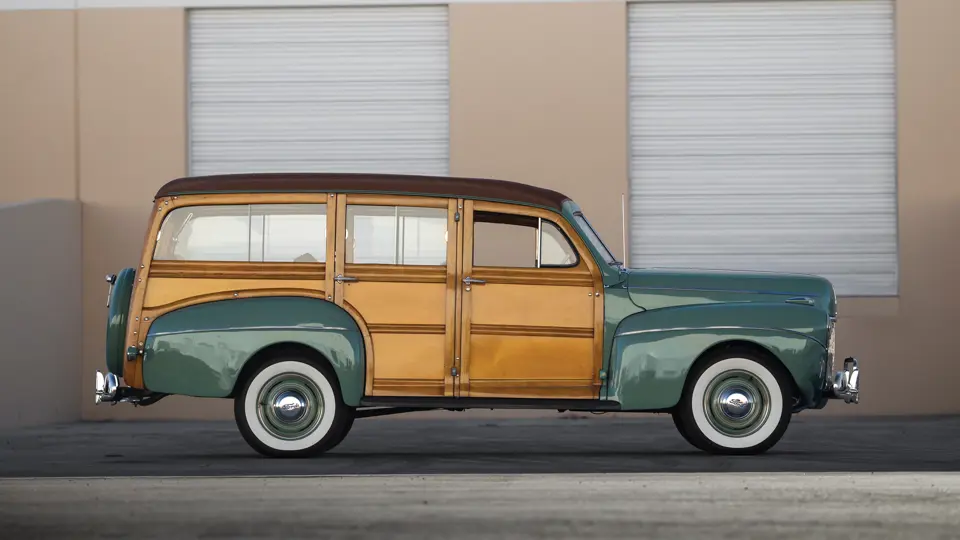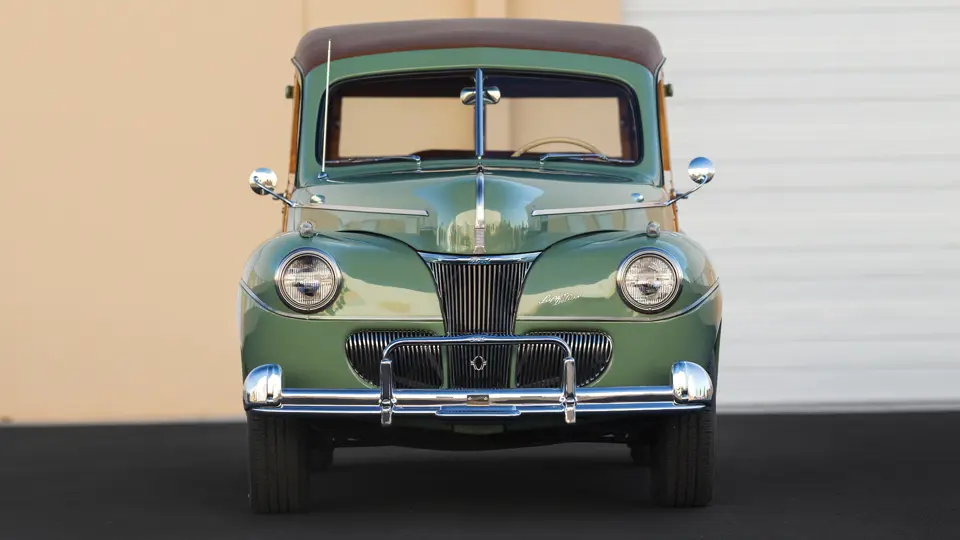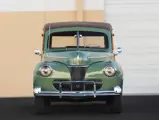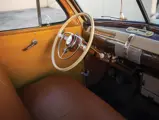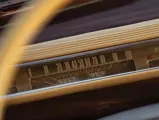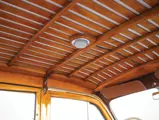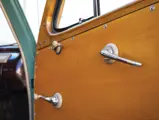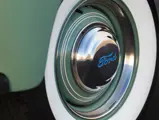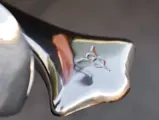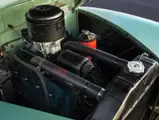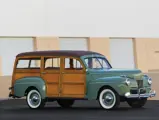Henry Ford was a mastermind when it came to production. He had the foresight and the money to purchase the town of Pequaming in Michigan’s Upper Peninsula. With it came a half-million acres of forest, and from those forests came the maple framing and birch paneling needed for Ford’s new station wagon. Initially, Iron Mountain’s mills turned out raw lumber. As time passed, woodworkers made components which were shipped to Briggs and Murray in Detroit and later to Raulang in Cleveland for assembly. Ford opened its own station wagon assembly line in the fall of 1936.
Featuring Super DeLuxe trim, this station wagon is powered by a 96 hp, 221 cu. in. “Flathead” V-8. It was Ford’s most expensive car in 1941 at $1,015. Just 9,485 were produced, a small fraction of Ford’s total production. FoMoCo documents show that it was originally shipped to Douglas Motor Co. in Elizabethtown, Kentucky. The consignor purchased it in 1982 in Newport, Rhode Island, from an estate and was told it had remained in the same family since new. Restoration was completed approximately eight years ago, with bodywork and paint done by Gary McLearn and the mechanicals by Clyde Bangiola, both of Cottonwood, Arizona. It was finished in black; however, underhood, the cowl retained its original color and as such the wagon was refinished in its proper Lochaven Green.
Trim was replated and all electrical wiring replaced, though the V-8 was not rebuilt as it was noted to be a strong runner at the time. The engine bay is detailed, and the undercarriage, while showing evidence of use, is very tidy. It is equipped with a radio, heater, and clock and comes complete with receipts as well as photos of the restoration. The woodie has received many awards at local shows, but has yet to be shown at a nationally recognized venue.




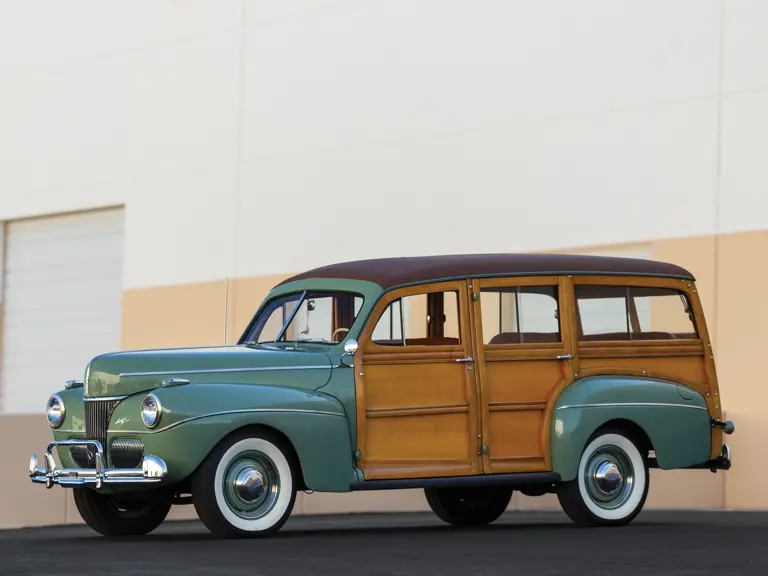
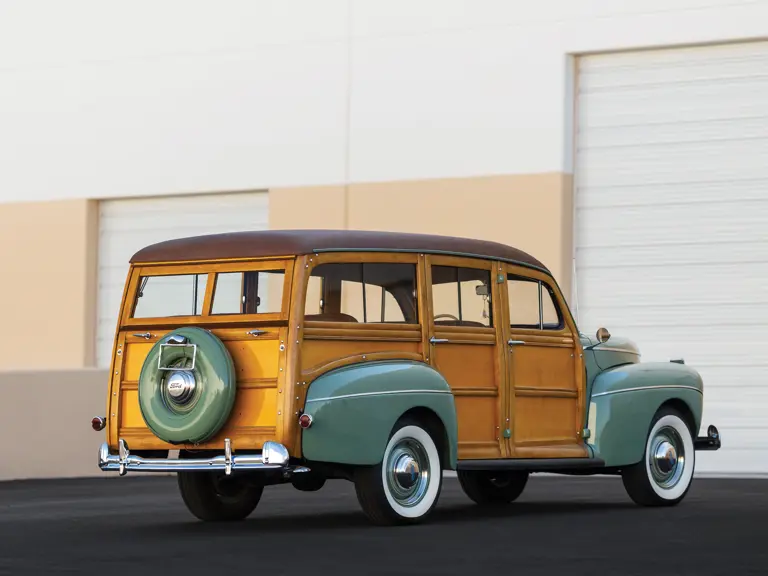



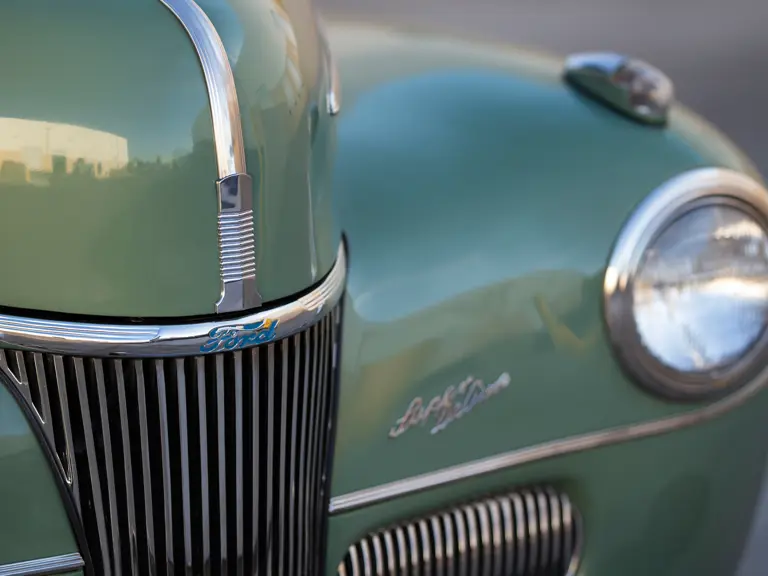
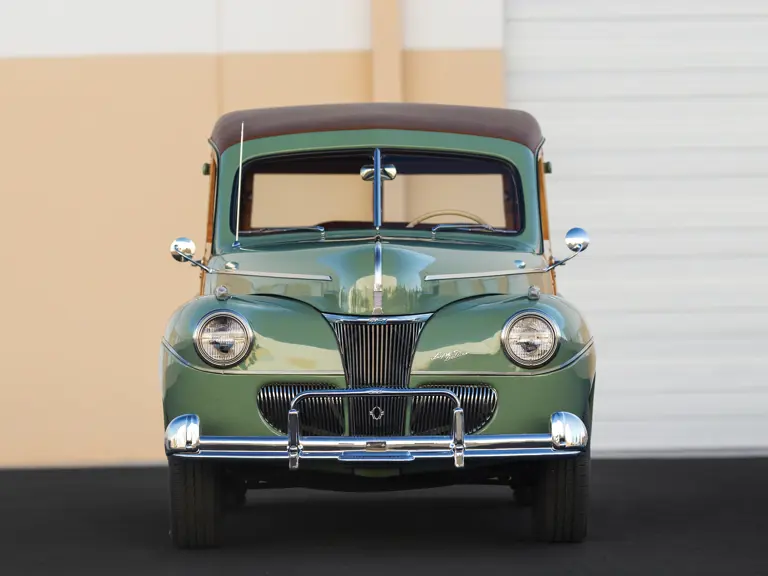
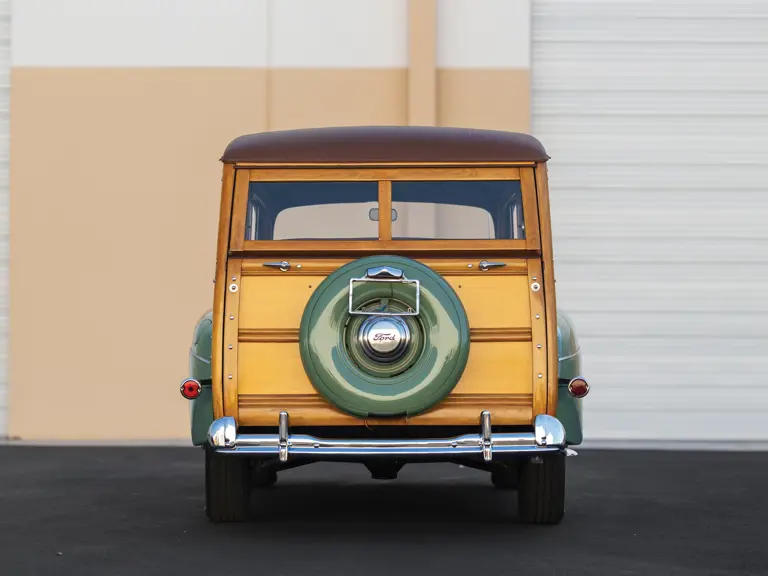
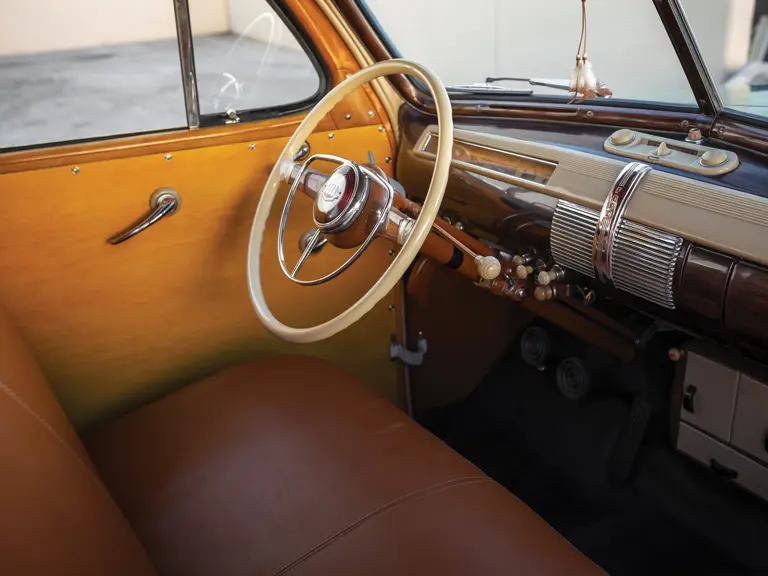
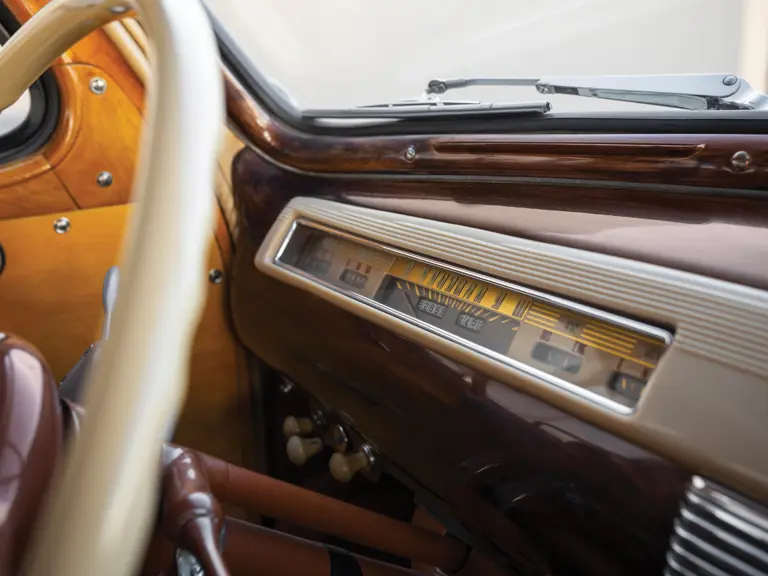
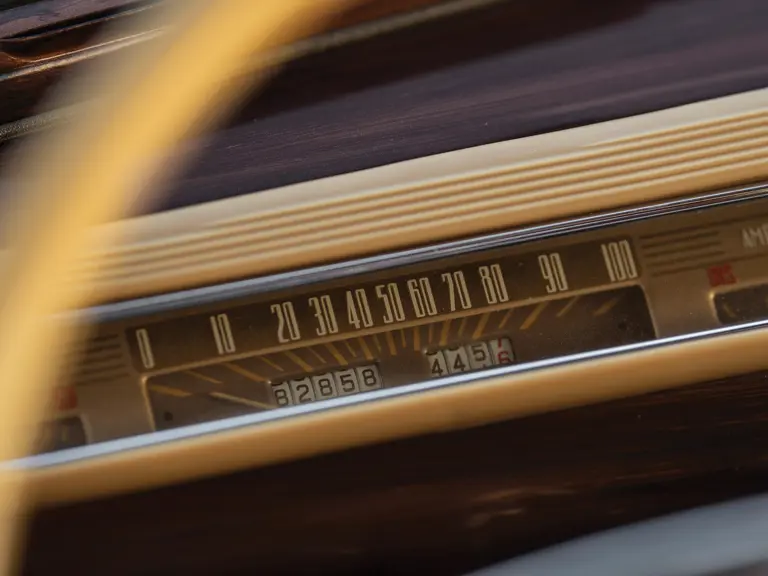
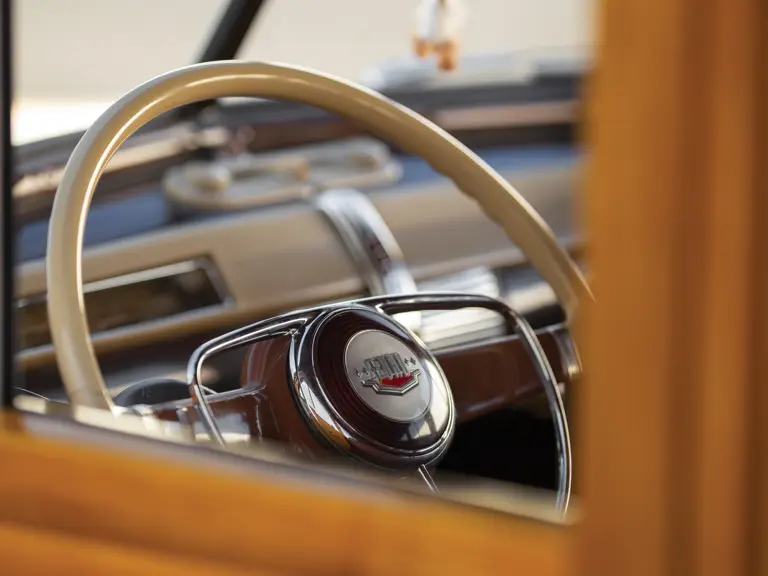
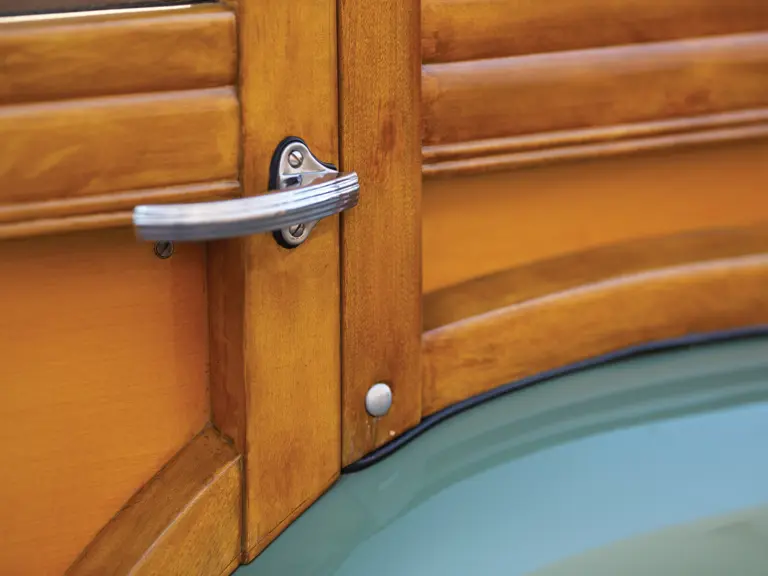
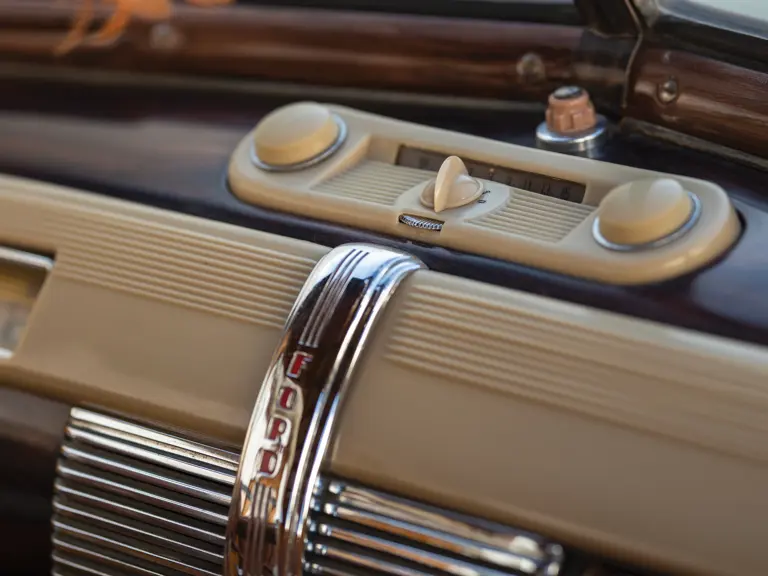
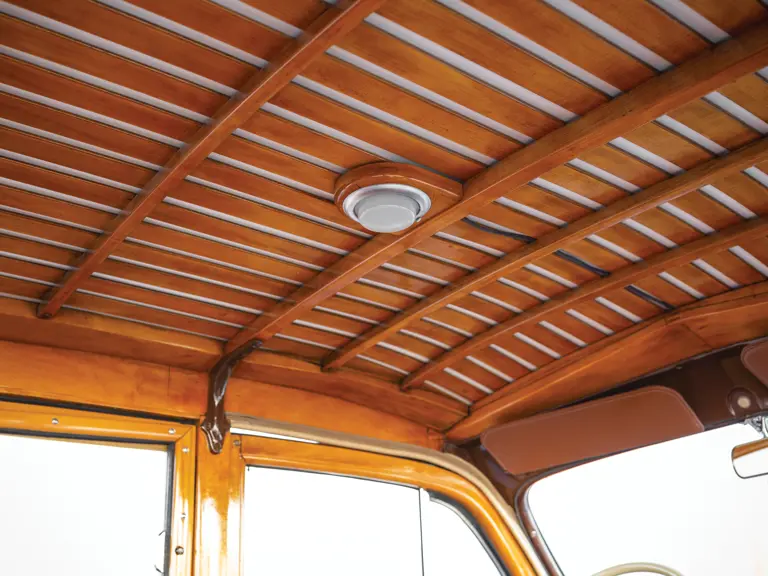

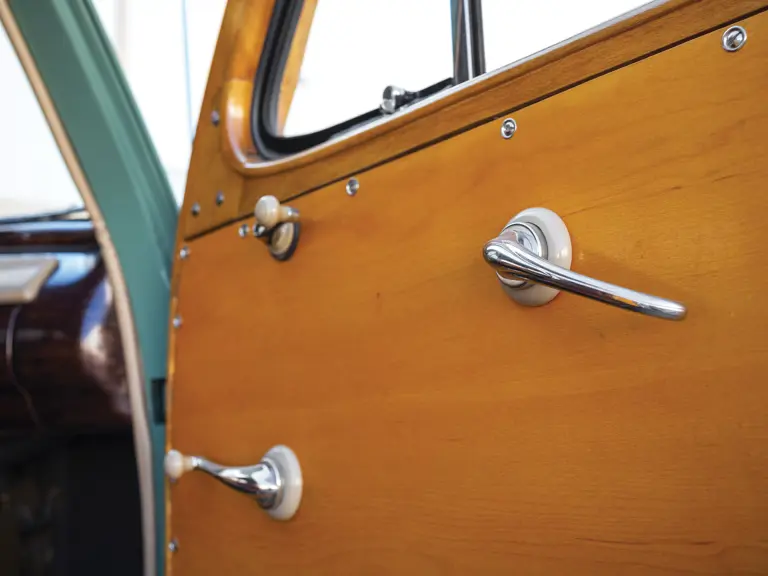
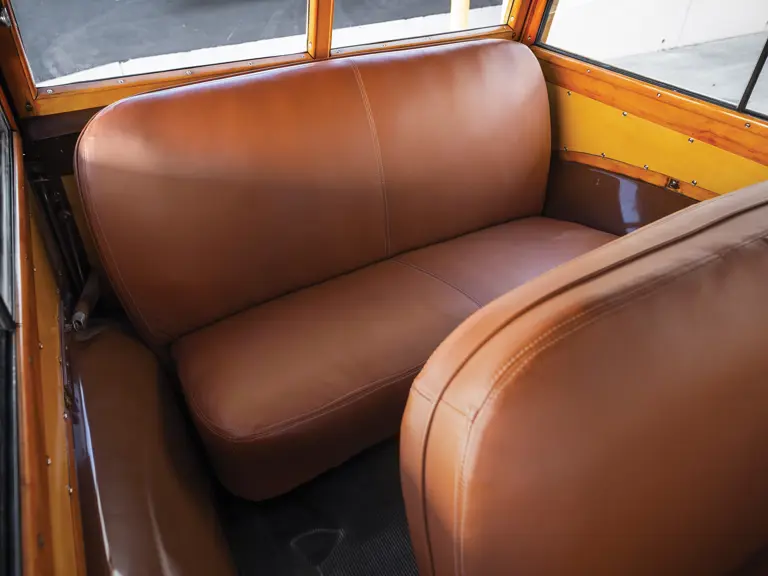
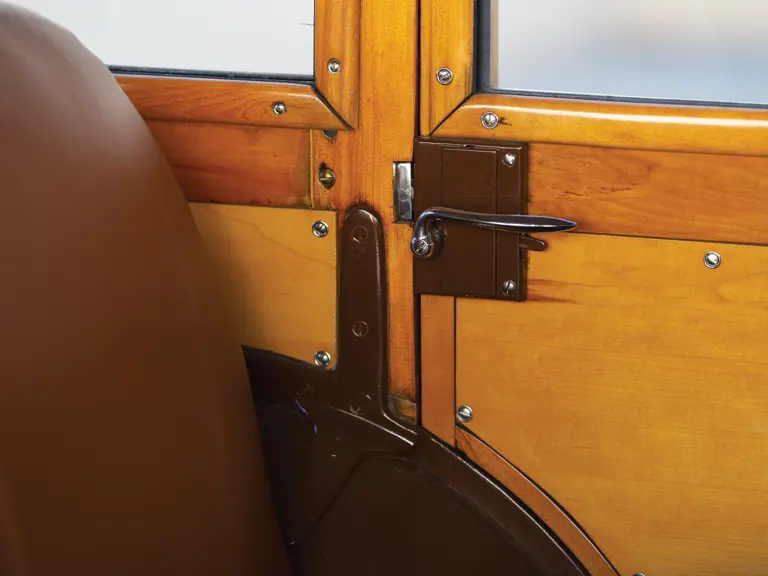

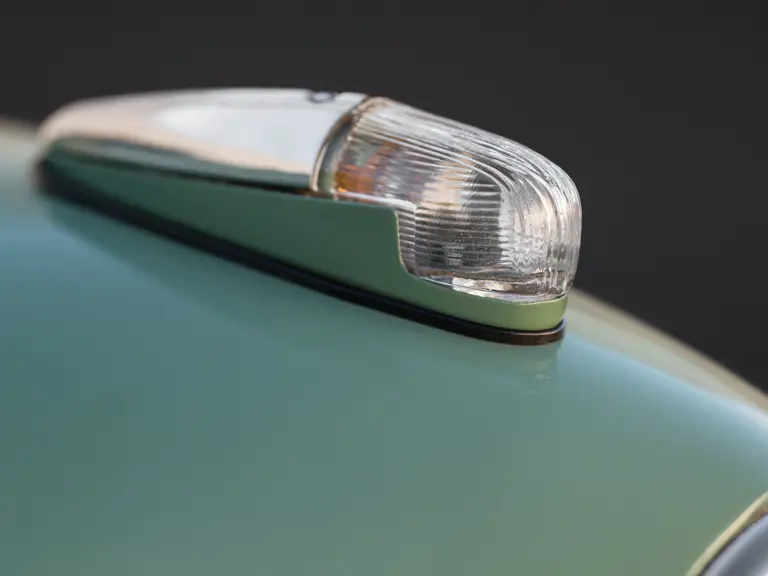

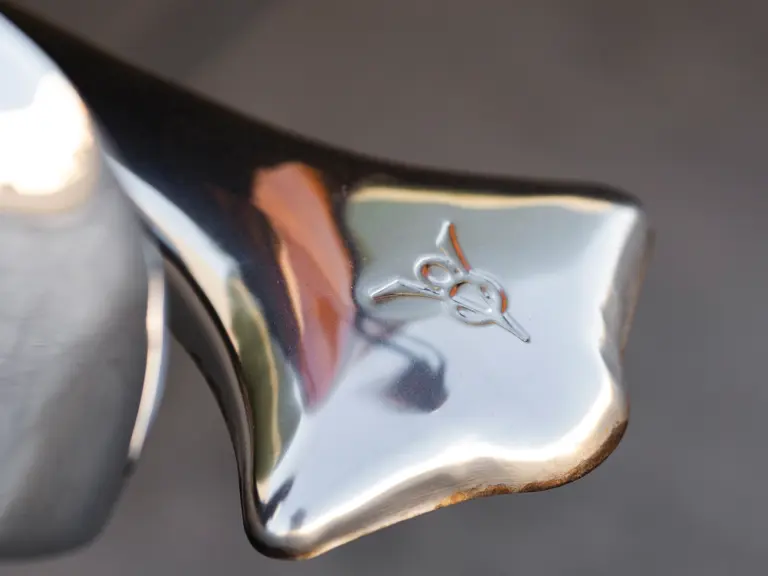
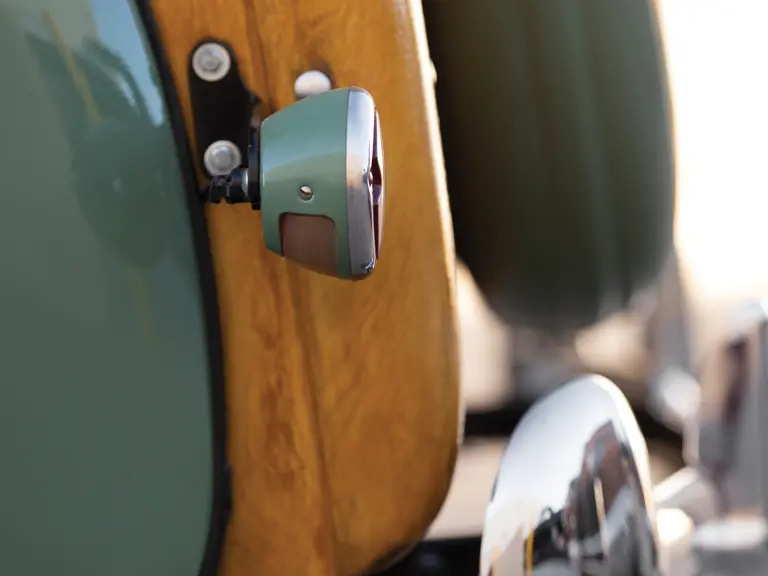
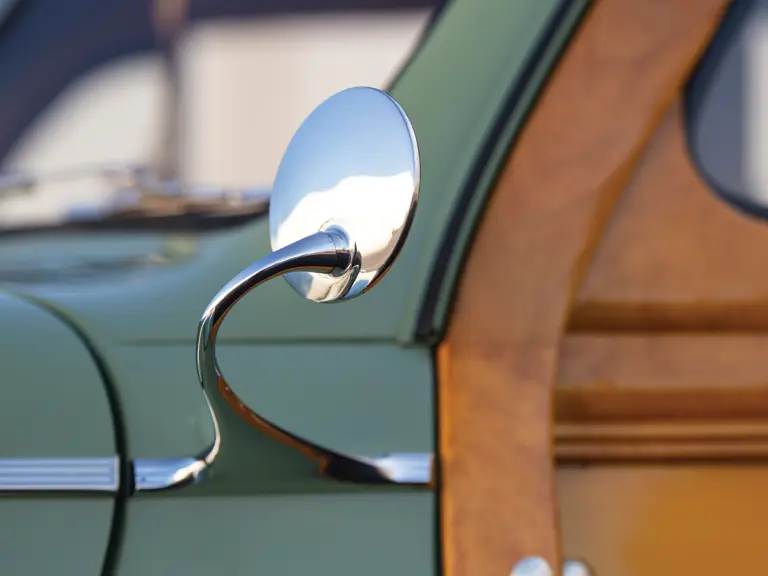
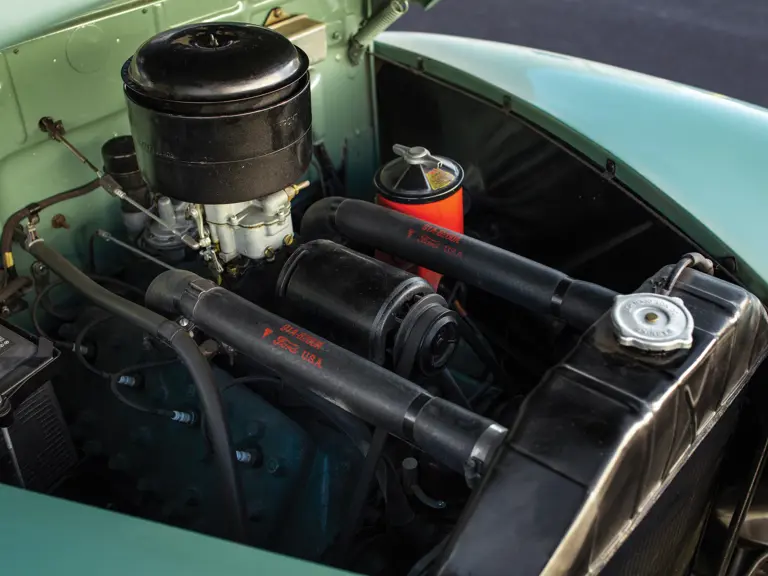
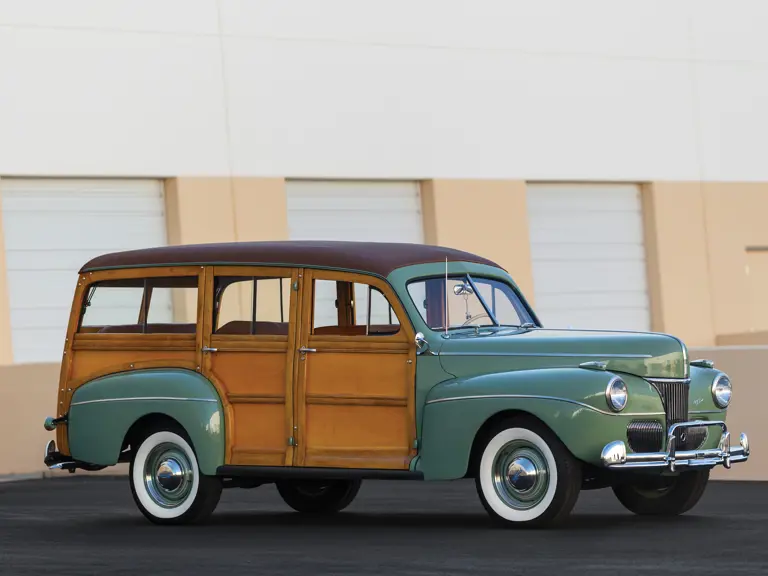
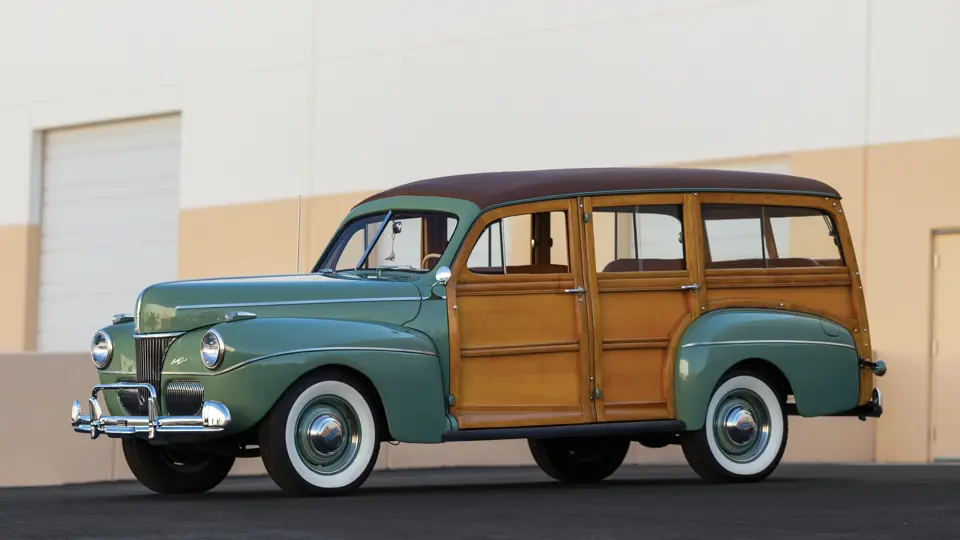
 | Phoenix, Arizona
| Phoenix, Arizona
